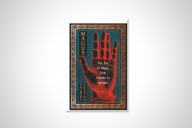You have /5 articles left.
Sign up for a free account or log in.
Ten years before the wave of trials and executions that convulsed Salem, Mass., for most of 1692, three poor, old women were put to death by hanging in the British port town of Bideford. They were charged with using their powers to murder other townspeople and wreck a number of ships at sea, plus interfering with livestock. (The cows of one of the witch hunters gave blood instead of milk.) I refer to the three of them as “poor, old women” because that is what they shared: a place at the very bottom of the social hierarchy, surviving -- just barely -- on crumbs from those above them.
Town records contain the precious few details known about their lives before the accusations started flying. A good bit more documentation exists on the Bideford residents supposedly tormented by the witches, as well as those in responsible positions who managed the whole religious and legal spectacle.
John Callow’s The Last Witches of England: A Tragedy of Sorcery and Superstition (Bloomsbury Academic) uses the archival record to read between the lines of the pamphlet literature churned out about “the Bideford Witches,” as the case became known, including a ballad set to a popular tune of the day. The Bideford trio are remembered as the last known executions for witchcraft in England, though not the last condemned to death. Two others were sentenced to hanging -- one of whom was quietly released after a period of imprisonment, while the other disappeared from the record without any evidence to suggest her sentence was carried through.
A lecturer in history at Goldsmiths College, University of London, Callow is also the author of Embracing the Darkness: A Cultural History of Witchcraft, and he brings to the Bideford episode a nuanced sense of how witches’ supposed powers were understood and experienced at different levels of early modern society. But first, he analyzes the economic and political tensions in a small urban area that, while prospering from its role in transatlantic commerce, maintained a fairly precarious stability on every other front. The population remained deeply divided from the Civil War and the restoration of a monarchy that clamped down on nonconformity with the Church of England.
Various fault lines converged at the household of a former shopkeeper named Thomas Eastchurch. He had “married up” and started referring to himself as a gentleman, only to find that upward mobility entailed an unexpected expense: the obligation to take in an unmarried sister-in-law, Grace, who developed a persistent malady that doctors could not diagnose or treat. She experienced agonizing, chronic pains in her head and limbs that tormented her day and night. The strain was both economic and emotional.
It came as some relief for everyone in the household when a reasonable explanation presented itself in July 1682: Grace was under attack by Temperance Lloyd, widely known in Bideford for being charged with witchcraft twice over the previous decade. She was acquitted both times. This runs against the popular notion that the accusation of witchcraft was almost a death sentence in itself. Callow points to “an increasing pattern towards refusing to prosecute or seeking a legal acquittal” in England during this period. But that did not reflect a more general loss of belief in witchcraft, and in the case of Temperance Lloyd, it left many feeling justice had not been done.
The third round of accusations stuck and went beyond the original target. This time, she was identified as the leader of a Satanic circle. Two other women making the rounds of Bideford had managed to offend or frighten its better-off citizens through their begging.
“There had been winners and losers in Bideford’s rapid mercantile expansion as a major Atlantic port,” writes Callow, “and the winners, among the town’s artisanate and nascent bourgeoisie, had little interest in continuing to subsidize the losers, among the shifting ranks of a pauperized underclass, with anything more than their direct -- and always grudging -- contributions to the poor rate [a tax on property to fund relief for the poor] and to a handful of well-run, respectable, charitable institutions within their community.”
As it happened, learned experts on demonology confirmed that the underclass was particularly susceptible to the temptations of witchcraft. Likewise with individuals suffering from melancholia. Extreme poverty -- combined, in the case of Temperance, with probable mental illness -- rendered the alleged witch’s circle a menace to society. A sort of ad hoc committee of townswomen examined the suspects’ bodies for “the Devil’s teats”: unusual growths from which their demonic familiars could be nursed. These were duly located (the aging body usually has a protuberance or two) and, under interrogation, the three confessed to dealings with “a fine gentleman all dressed in black” with hooves for feet.
It seems to me that the Evil One’s undisputed failure to make any of them wealthy and powerful should have counted as evidence that the three women did not enter a pact with him. But on the contrary: their continued poverty was evidence that the Devil did not bargain in good faith.
The period between Temperance Lloyd’s arrest and the hangings lasted a little under two months. Of the trial, Callow writes that “the questioning of the women was undertaken amid an atmosphere more akin to a bear-pit than a courtroom.” Close examination of various statements made in the confessions show contradictions so blatant that at least some of those in responsible positions must have noticed it. But more importantly, Callow identifies a line of development within the testimony over time -- the details began to conform more closely to the patterns of Satanic and witchly behavior described in the authoritative literature of the day.
This, while not surprising, is chilling -- and for a couple of reasons. Some leading figures involved in the case regarded the accusations, and indeed the whole idea of witchcraft, with disbelief. One was the local vicar, the Reverend Michael Ogilby, whose cynicism, laziness and greed would make him a comic figure in a novel or play, though not so much in real life. Had Ogilby made any effort on the women’s behalf, events might have turned out differently. Worse, his corruption amounted to a crisis of established leadership that another clergyman, the Reverend Francis Hann, rushed to fill. Hann had done much reading in the field of advanced demonological theory and was glad to be able to make use of it. But the man was no small-time opportunist. Callow suggests that his ambition was to launch a campaign against witchcraft throughout the countryside. Bideford was to be his chance at the big time.
It was not, as things turned out -- and a reader might well share the author’s evident satisfaction that Temperance Lloyd has become something of a folk hero in the centuries since her death, while Hann is now a footnote to a footnote. But on the whole, I’m not sure that celebrating the Bideford witches is the best way to remember them. Retrospective empowerment is no power at all, and that is what they had. “Unsuccessful and unwanted,” as Callow writes, “they not only lacked the sympathy of others but aroused feelings of either fear or condescension among their contemporaries.” And that was before their luck ran out.








